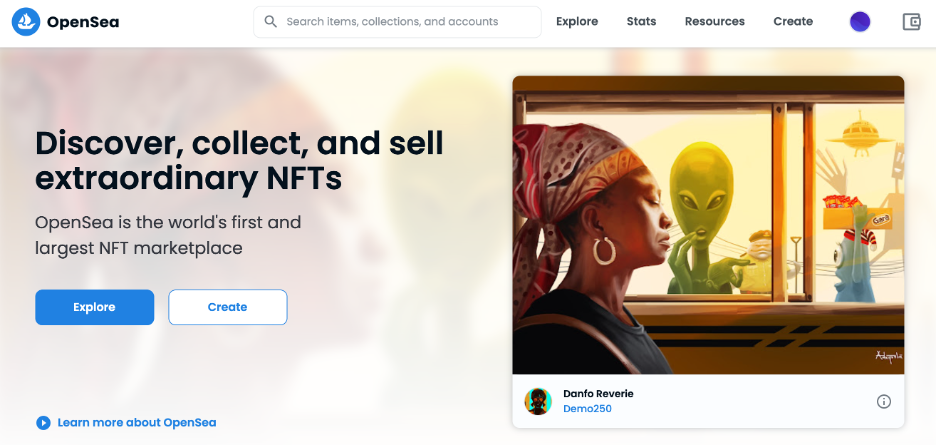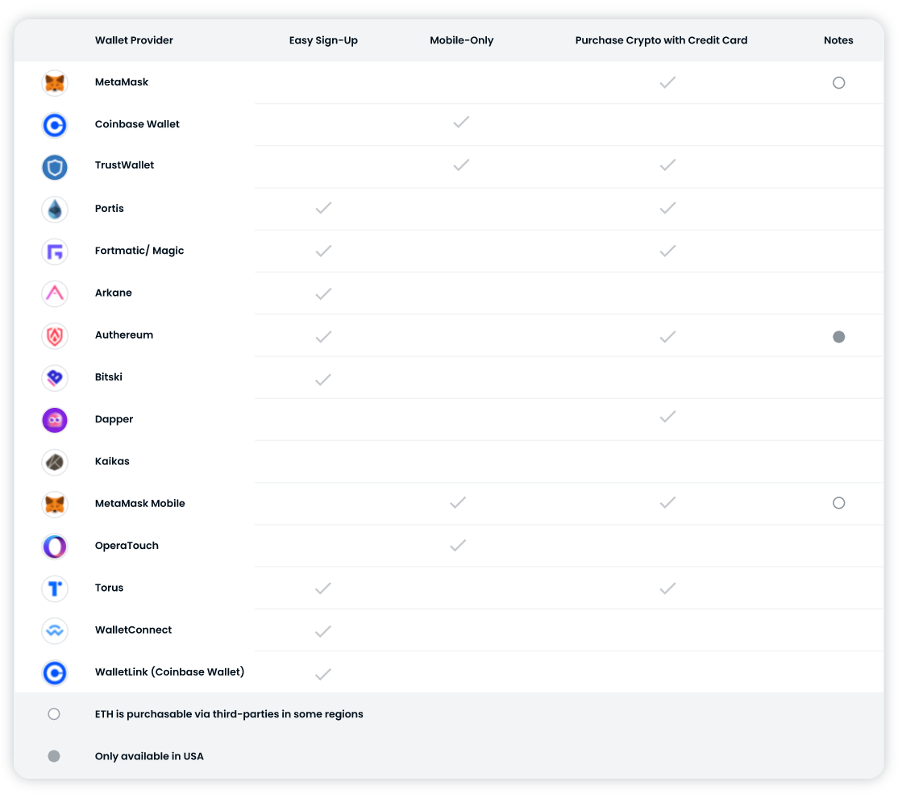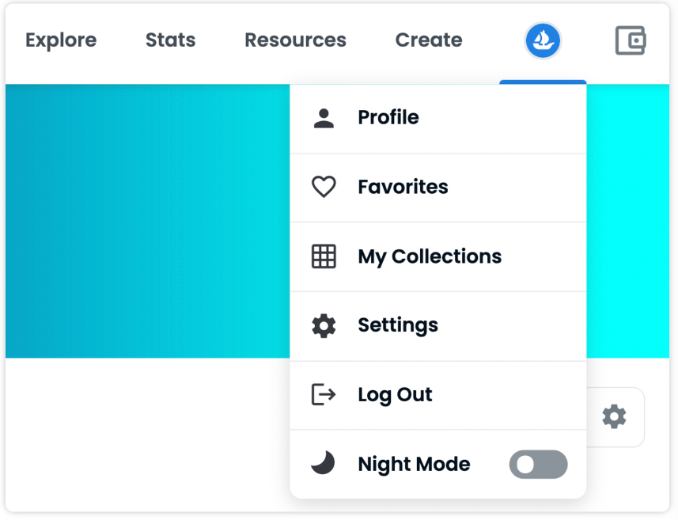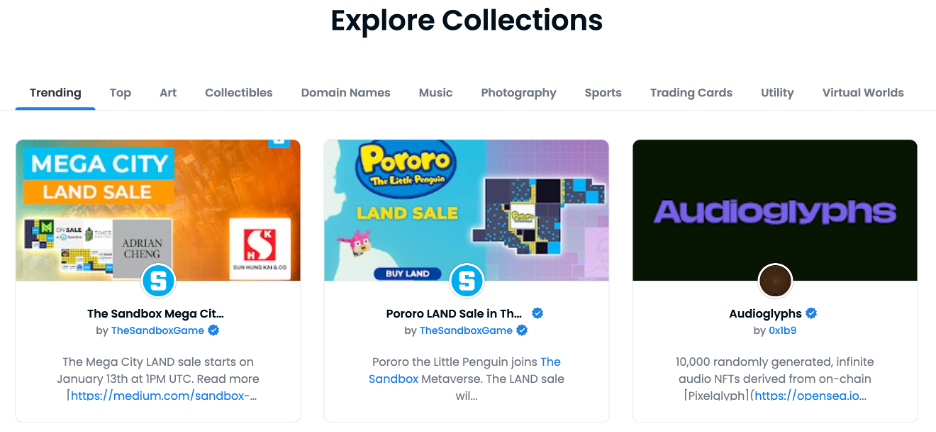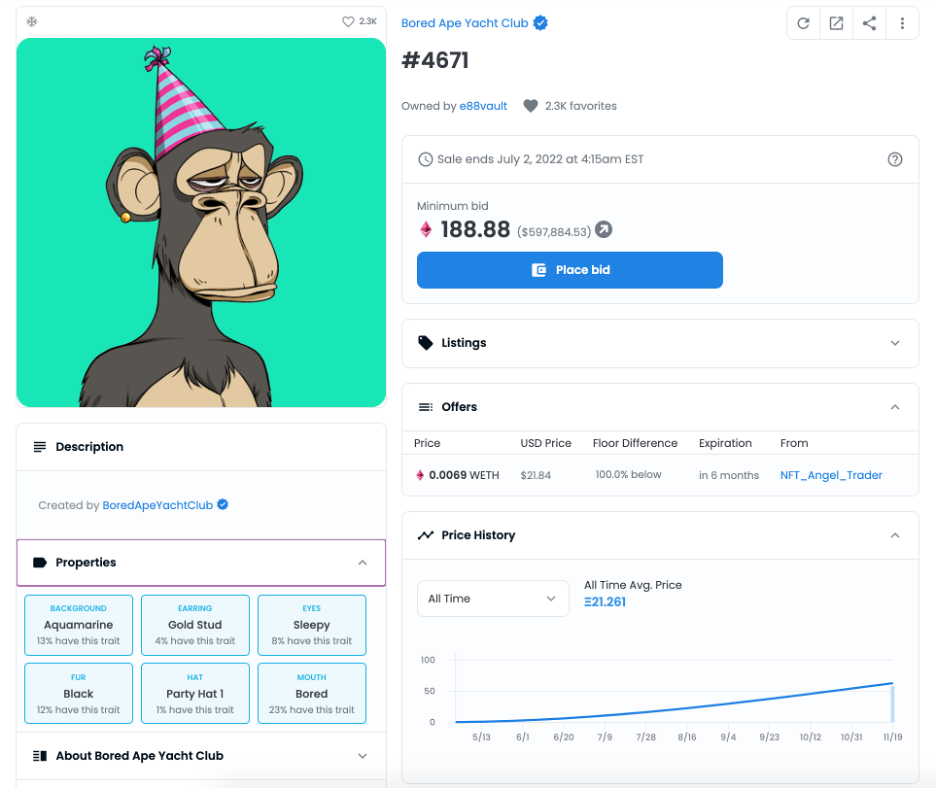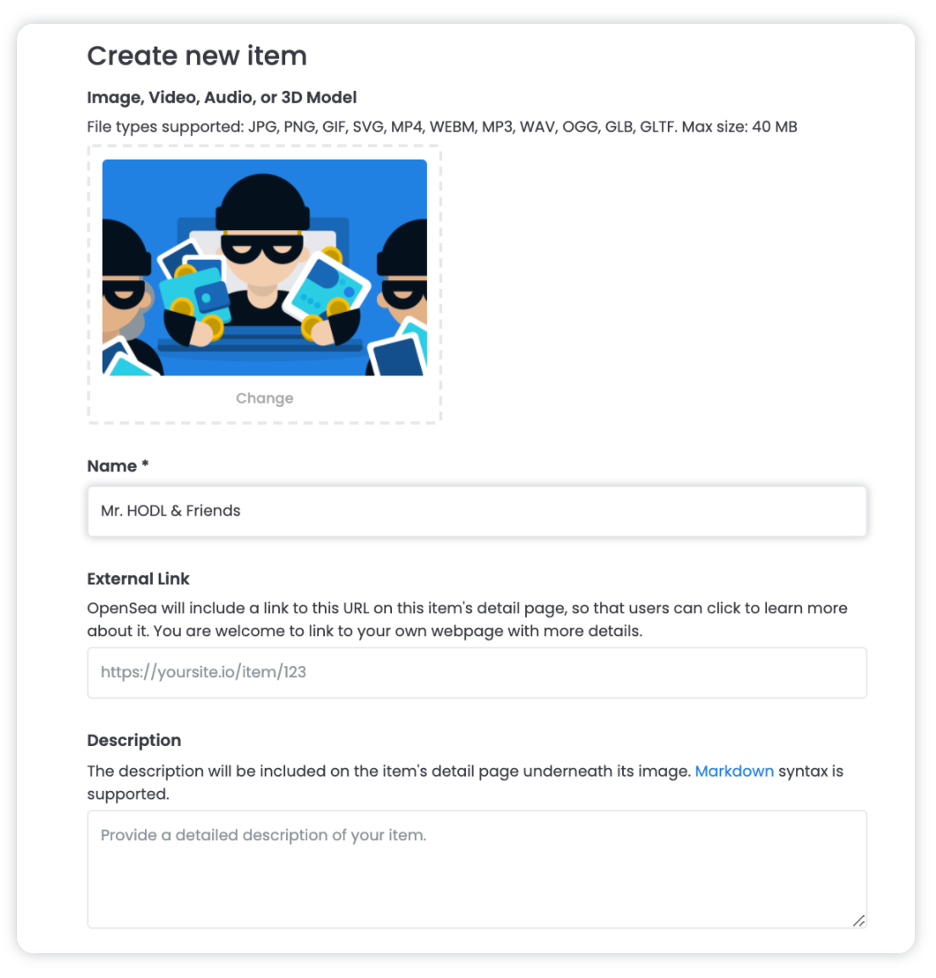Written by Rachel Korsen
What is OpenSea
OpeanSea is the largest marketplace for crypto goods, offering a variety of crypto assets with a primary focus on NFTs. Their seletion includes: Art, Trading Cards, Collectibles, Domain Names, Music, Photography, Sports, Utility and Virtual Worlds. OpenSea is essentially the Amazon of NFTs, providing access for users to buy, sell, and trade non-fungible tokens. Non-Fungible tokens are unique in that they can’t be replaced with something else. As compared to something like bitcoin, you can trade on bitcoin for another bitcoin as they are the same asset, meaning fungible.
Figure 1: Screenshot of OpenSea. Source: OpenSea
The main currencies being utilized on OpenSea are Ethereum (ETH)/WETH, USDC, and DAI. There are many other tokens that can be utilized on OpenSea, but in order to partake in this marketplace you need to utilize cryptocurrencies; it is not possible to make payments with currencies like USD or the Euro.
For artists and collectors, this is an exciting new prospect. For artists, this is a newer avenue to create and sell artwork. For collectors, OpenSea offers a more accessible way to get involved in communities and be part of the arts economy.
How to Use OpenSea
OpenSea is accessible to anyone who has an interest in being part of the NFT community. No account creation is required to browse NFTs and collections available on OpenSea. If you are here, then you most likely want to be part of the marketplace and buy or sell NFTs!
OpenSea’s help center offers detailed guide explaining what you need to do to create an account. First and foremost, you need a crypto wallet. There are several options to choose from, but most users choose MetaMask on their desktop and Coinbase for mobile use.
Figure 2: Wallet Providers. Source: OpenSea.
Additionally, you will need to purchase Ethereum, as this will be needed to either mint an NFT or purchase an NFT, as well as pay for the gas fees to complete transactions. Ethereum will be stored on your crypto wallet. After completing these 2 steps, you can then create your profile by clicking the profile icon at the top right of the screen. Once doing so, connect your wallet and follow through with the remaining steps. Lastly, click “sign” to move onto updating your profile. Once you complete your profile to your liking then it’s time to start using OpenSea!
Figure 3: Create a profile. Source: OpenSea.
What Makes OpenSea Great
As a buyer of NFTs, OpenSea is overall an easy site to navigate. Through the explore tab, all categories are clearly laid out. A helpful research for users looking for active NFT projects is the trending tab. The trending tab categorizes the projects that have the most recent sales, likes, and views on the platform.
NFT Collections. Source: OpenSea.
Another component of OpenSea that makes it a great resource for buyers are the additional elements shown with each NFT. All of the information associated with a particular NFT is kept in one location, including the minimum bid, the conversion of ETH to USD, the price history, favorites, and more. Another set of helpful information for those purchasing NFTs is the listing of the NFT’s properties. This shows the percentage of NFTs in the collection with specific attributes. Properties of the NFT may be of use to those trying to purchase the most valuable NFTs in a collection as they may provide more long-term value for the owner.
Figure 4: NFT Details. Source: OpenSea.
For artists and creators, creating an NFT on OpenSea is a very straightforward process. OpenSea provides step-by-step instructions on their site for how create an NFT. It’s a very similar process to uploading artwork on Instagram. You upload your image and give it a name. If you want to provide an external link, it will go into the details of the NFT. There is a box for a description section to add a little blurb for your creation. You can customize the NFT by adding properties, levels, states, and unlockable content that is shown only to the owner of the NFT. If you are looking to sell your NFT, OpenSea also provides a thorough explanation of how to do so.
Figure 5: Creating an NFT. Source: OpenSea.
On OpenSea, artists have the ability to see how their artwork is doing in the NFT ecosystem. In the same way that buyers can track performance, artists can see the details of their overall portfolio. They can view the volume of trades, the amount of owners, and even details of bids if the NFT is set for an auction. Additionally, royalty rate of 10% can be set by the artist. Overall, this platform allows for more transparency for the artist and buyer in the NFT landscape.
Limitations & Concerns
Some of the biggest hurdles with OpenSea are their customer support. With so many transactions occurring on the platform, they are bombarded with emails from customers, making the support system less efficient than it could be. Another limitation of OpenSea is the search function. While the explore section is clearly laid out by category, the filtering system has some limitations for those looking for specific items. For example, I typed into the search the word ‘cupcake’. I received 196,000 items in response to the word cupcake; however, the results provided Samurai and Bored Ape NFTs. There is a chance that there are no cupcake NFTs. If this is the case, then something like ‘no results were found’ would be more helpful for users.
Another limitation of the site is a lack of communication and private messaging. Enhanced communication tools can further help build community directly on the site. In addition to this, users have no direct communication with the seller. The only way to do so is if the seller provides a link to their social media or some other form of communication, taking part of the purchase process off of OpenSea.
A big concern for platforms like OpenSea is monitoring art theft. Many artists have had their artwork stolen and minted by random people on the internet without their permission, this does not differ from NFT platforms. Lastly, there is concern is utilizing either a hot wallet vs a cold wallet. There have been issues reported where assets have been stolen directly from hot wallets. A hot wallet connects to the internet while a cold wallet does not, making it more secure. It is important for artists and buyers to keep these concerns in mind when starting to join the NFT space.
Pros & Cons
Pros
No coding required to mint an NFT
Website is easy to navigate
Low transaction fee of 2.5%
Gas is free for auction winners
10% royalty rate
Larger variety of NFTs for buyers
Cons
Gas fees
Takes time to set up a wallet and purchase ETH
Energy Consumption
Maximum 10% royalty rate
Does not take USD or Euro
Difficult for artists to stand out
Lack of advertising opportunities on the site
Final Thoughts
After taking a deeper look at OpenSea, it is overall a platform worth using for those who want to buy, sell, and create NFTs. You will have access to the largest collection of NFTs on the market and have the chance to partake in a vibrant community. OpenSea offers plenty of resources on account set-up and correct use of the platform. For those who are just starting out in the NFT world, don’t get discouraged by the learning curve of utilizing the platform. Whether you’re a buyer or seller, the process becomes more intuitive the more you use it. I encourage everyone to give OpenSea a try and start your journey into Non-Fungible Tokens!


